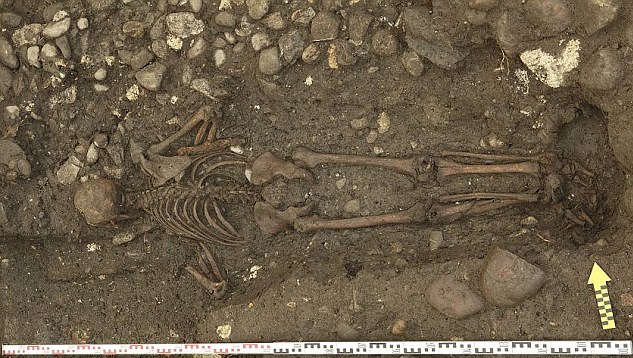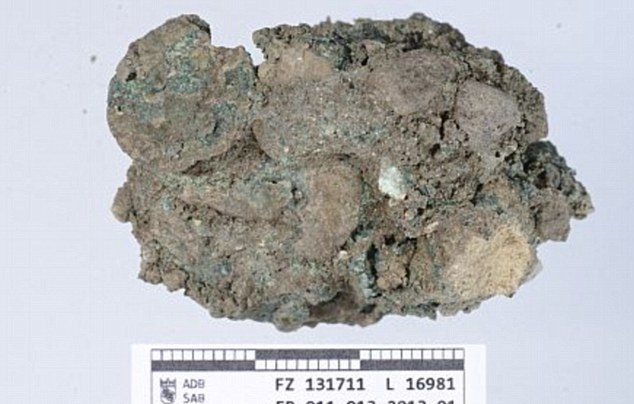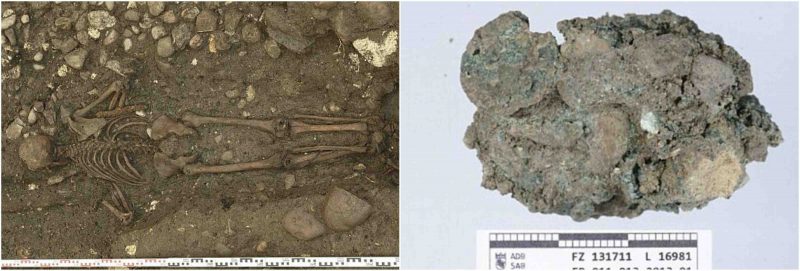In 2013, researchers discovered the location of an ancient cemetery in Switzerland. It dates back to the early Middle Ages, and it has been estimated that 342 bodies were laid to rest there between the 8th and 17th centuries.
Buried a small distance away from the cemetery, archaeologists made an unusual discovery – a skeleton that was lying face down inside its grave. Through X-ray examination of a purse found alongside the body, researchers concluded that the man might have been a traveling merchant who was buried in haste after perishing from a disease or possibly murder.

THE MYSTERIOUS BURIAL
With the body, researchers also discovered a knife and the remnants of the purse, which contained multiple coins that had fused together into a block of metal over the years. The X-ray examinations unveiled 24 single coins from different regions; the most recent were dated back to 1629.
Researchers have said it is unlikely that the man had been robbed before he died, yet they are saying that murder is not out of the question at the moment. Countless theories have tried to explain the unknown circumstances that led to this unusual burial.
The archaeologists have stated that it might have been done in a hurry. The cemetery was found in the Bernese Lakeland area during early construction on a new underground garage beside a churchyard located in the village of Schüpfen.
Researchers have said that the skeleton that was face down was among the last 15 bodies of the 342 that had been buried at the site. As stated by Christian Weiss, who is a numismatic specialist with the Archaeological Service for Canton Bern, this kind of burial was quite unusual.
The coins they discovered were far too fragile for them to be able to be separated. The team had used a high-resolution detector as well as a new piece of equipment known as the µDetect, an X-ray computer tomograph which can take precise measurements of the artifacts. The block of coins is not very big, but they do absorb a great deal of energy, so the archaeologists required an extremely powerful source of X-rays, as stated by Mathieu Plamondon, one of Empa’s X-ray experts. They did not know how well this was going to work as this was the very first time they had created a measurement with this new equipment. The examination unveiled 24 individual coins inside the ancient block of metal.
Some had been stamped on one side, some others were stamped on both sides, and other coins were created with two various types of metal. One of the coins was created out of pure silver.

By manipulating the data that came from the X-rays, the researchers were able to unveil the pictures and texts that were on the coins. The most recent coin dates back to 1629; this is an indication that the man had been buried in the 17th century. Many of the coins could be traced to various areas of distinct local circulation. The archaeologists think it was possible this man was a traveling merchant since they discovered coins in the purse from the Luzern Schwyz, Breisgau, Basel Freiburg, and Fribourg Bern-Solothurn areas.
Here is another story from us: Oldest beer-making “factory” found near the Wei River in China
The coins, taken together, were a really small amount of change – there was nothing in the purse that would have had much value. It was probably worth equivalent to 100 Swiss francs today. Considering the low value the coins had, archaeologists state that the man was most likely not robbed before his death, although murder cannot be ruled out as a cause of death.
